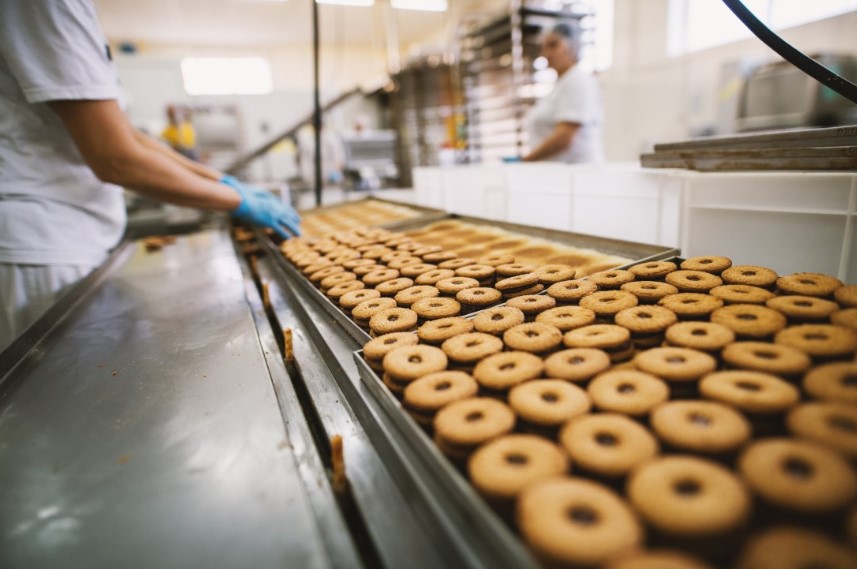Introduction to Food and Drink Manufacture
Food and drink manufacture is an essential industry that ensures the availability of consumable products to the global population. From farm to table, this intricate process involves various stages of production, each crucial to delivering safe and high-quality food and beverages.
Evolution of Food and Drink Manufacture
The history of food and drink manufacture dates back to ancient civilizations, where early methods of preserving and processing food were developed. Over centuries, these methods evolved with technological advancements, leading to the highly sophisticated manufacturing processes we see today. The industrial revolution marked a significant milestone, introducing machinery and mass production techniques that transformed the industry.
Importance in the Modern Economy
Food and drink manufacture plays a pivotal role in the global economy. It not only ensures food security but also contributes significantly to employment and economic growth. The industry’s ability to adapt to consumer demands and regulatory standards makes it a cornerstone of modern society.
The Basics of Food and Drink Manufacture
Understanding the fundamentals of food and drink manufacture involves exploring the various stages of the production process, from sourcing raw materials to packaging finished products.
Raw Materials Sourcing
The journey of food and drink products begins with the sourcing of raw materials. These ingredients must meet stringent quality standards to ensure the final product’s safety and taste. Suppliers are often vetted through rigorous processes to ensure they adhere to sustainability and ethical practices.
Primary Processing Techniques
Primary processing refers to the initial steps taken to convert raw ingredients into a more consumable form. This includes cleaning, cutting, grinding, and other preparatory actions. For instance, grains are milled into flour, and fruits are juiced. These processes are designed to retain the nutritional value and quality of the raw materials.
Packaging Methods
Packaging plays a crucial role in food and drink manufacture. It protects products from contamination, extends shelf life, and provides essential information to consumers. Various packaging methods, such as canning, bottling, and vacuum sealing, are employed based on the nature of the product.
Food and Drink Safety Standards
Ensuring the safety of food and drink products is paramount. Regulatory bodies and compliance measures are in place to safeguard public health.
Regulatory Bodies and Compliance
Food and drink manufacturers must comply with regulations set by bodies such as the Food and Drug Administration (FDA) in the United States and the European Food Safety Authority (EFSA) in Europe. These regulations cover every aspect of production, from ingredient sourcing to labeling.
Hazard Analysis and Critical Control Points (HACCP)
HACCP is a systematic approach to identifying, evaluating, and controlling food safety hazards. This preventive system is designed to ensure that potential risks are managed at critical points during the manufacturing process. By adhering to HACCP principles, manufacturers can significantly reduce the likelihood of contamination.
Technological Advancements in Food and Drink Manufacture
The integration of advanced technologies has revolutionized food and drink manufacture, enhancing efficiency, safety, and quality.
Automation and Robotics
Automation and robotics have become integral to modern food and drink manufacture. Automated systems streamline production lines, reduce human error, and increase productivity. Robots are used for tasks such as packaging, palletizing, and quality inspection, ensuring consistency and precision.
Internet of Things (IoT)
IoT technology connects various devices and systems within the manufacturing process, enabling real-time monitoring and data collection. This connectivity allows for better control over production parameters, predictive maintenance of equipment, and improved traceability of products.
Artificial Intelligence (AI) in Production
AI and machine learning algorithms are being used to optimize manufacturing processes. These technologies can analyze vast amounts of data to predict trends, detect anomalies, and suggest improvements. AI-driven systems enhance decision-making and contribute to more efficient and sustainable production practices.
Sustainability in Food and Drink Manufacture
Sustainability has become a critical focus in food and drink manufacture, driven by the need to reduce environmental impact and meet consumer demand for eco-friendly products.
Eco-friendly Practices
Manufacturers are adopting eco-friendly practices such as using renewable energy sources, reducing water consumption, and minimizing waste. Initiatives like zero-waste production and carbon-neutral manufacturing are becoming more prevalent.
Waste Management
Effective waste management strategies are essential in food and drink manufacture. This includes recycling, composting, and reusing by-products. Innovations in packaging, such as biodegradable materials, also play a significant role in reducing waste.
Sustainable Sourcing
Sustainable sourcing involves obtaining raw materials in a manner that supports environmental conservation and ethical practices. This includes sourcing from suppliers who practice sustainable agriculture, fair trade, and responsible fishing.
Case Studies in Food and Drink Manufacture
Examining case studies of successful food and drink manufacturing processes provides valuable insights into best practices, challenges, and future trends.
Successful Manufacturing Processes
Case studies of companies like Nestlé, Coca-Cola, and Unilever highlight successful manufacturing processes. These companies have implemented advanced technologies, sustainability initiatives, and robust safety protocols to maintain their market leadership.
Challenges and Solutions
Food and drink manufacturers face various challenges, including supply chain disruptions, regulatory compliance, and changing consumer preferences. Solutions such as diversification of suppliers, investment in technology, and continuous improvement programs are essential for overcoming these challenges.
Future Trends
The future of food and drink manufacture is shaped by trends such as personalized nutrition, plant-based products, and smart packaging. Innovations in biotechnology, such as lab-grown meat and alternative proteins, are also set to transform the industry.
FAQs
What are the key stages in food and drink manufacture? The key stages include raw materials sourcing, primary processing, packaging, and distribution. Each stage involves specific processes to ensure the quality and safety of the final product.
How do manufacturers ensure the safety of food and drink products? Manufacturers adhere to regulatory standards and implement safety protocols such as HACCP. These measures help identify and control potential hazards throughout the production process.
What role does technology play in food and drink manufacture? Technology enhances efficiency, safety, and quality in food and drink manufacture. Automation, IoT, and AI are some of the technologies used to optimize production processes and improve traceability.
What are the benefits of sustainable practices in food and drink manufacture? Sustainable practices reduce environmental impact, support ethical sourcing, and meet consumer demand for eco-friendly products. These practices also contribute to long-term business viability.
How do manufacturers address waste management? Manufacturers implement strategies such as recycling, composting, and reusing by-products. Innovations in packaging, such as biodegradable materials, also help reduce waste.
What trends are shaping the future of food and drink manufacture? Trends such as personalized nutrition, plant-based products, and smart packaging are shaping the future. Innovations in biotechnology, like lab-grown meat, are also set to transform the industry.
Conclusion
Food and drink manufacture is a complex and dynamic industry that plays a vital role in society. Through advancements in technology, adherence to safety standards, and commitment to sustainability, manufacturers are continually evolving to meet the demands of consumers and regulatory bodies. By understanding the intricate processes involved and the industry’s future direction, we can appreciate the immense effort that goes into delivering the food and beverages we enjoy every day.

